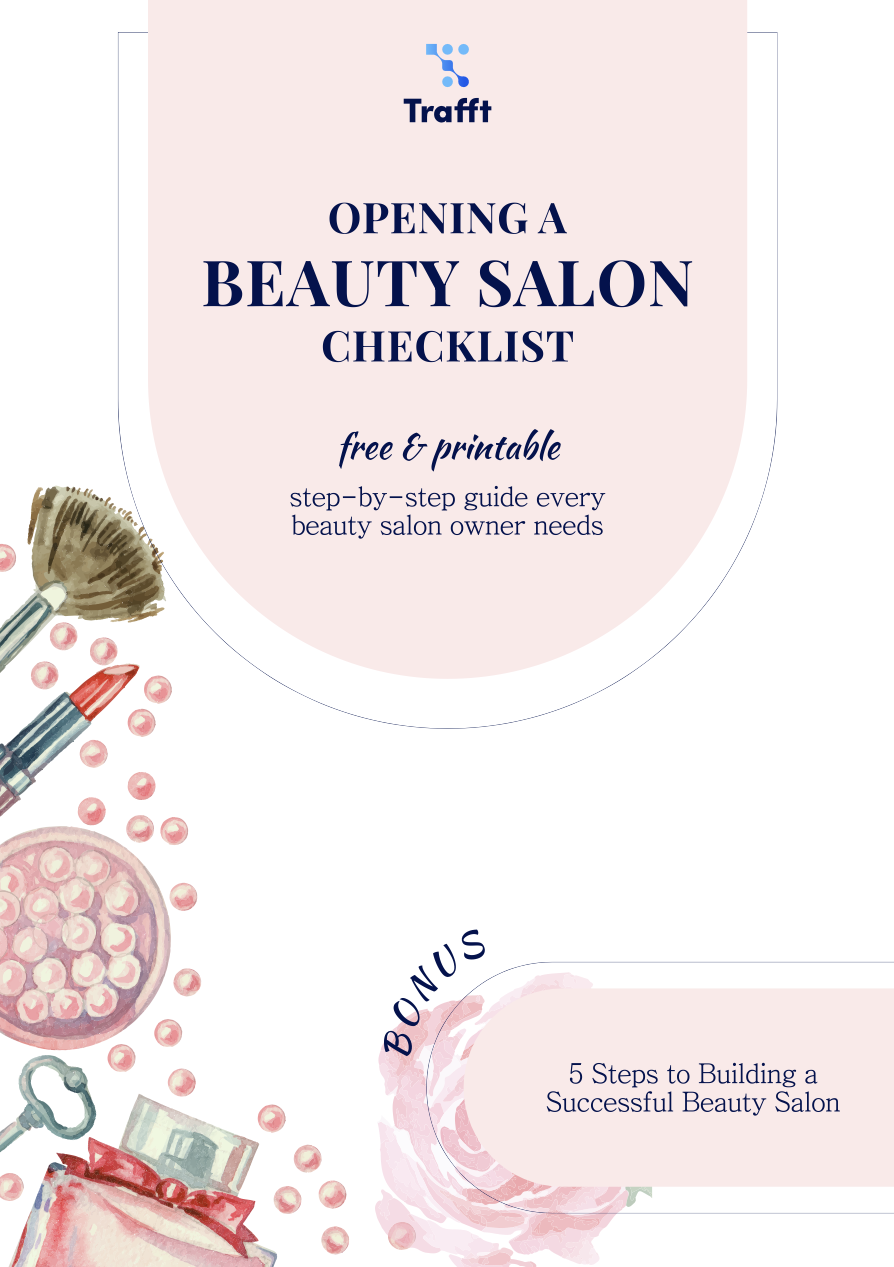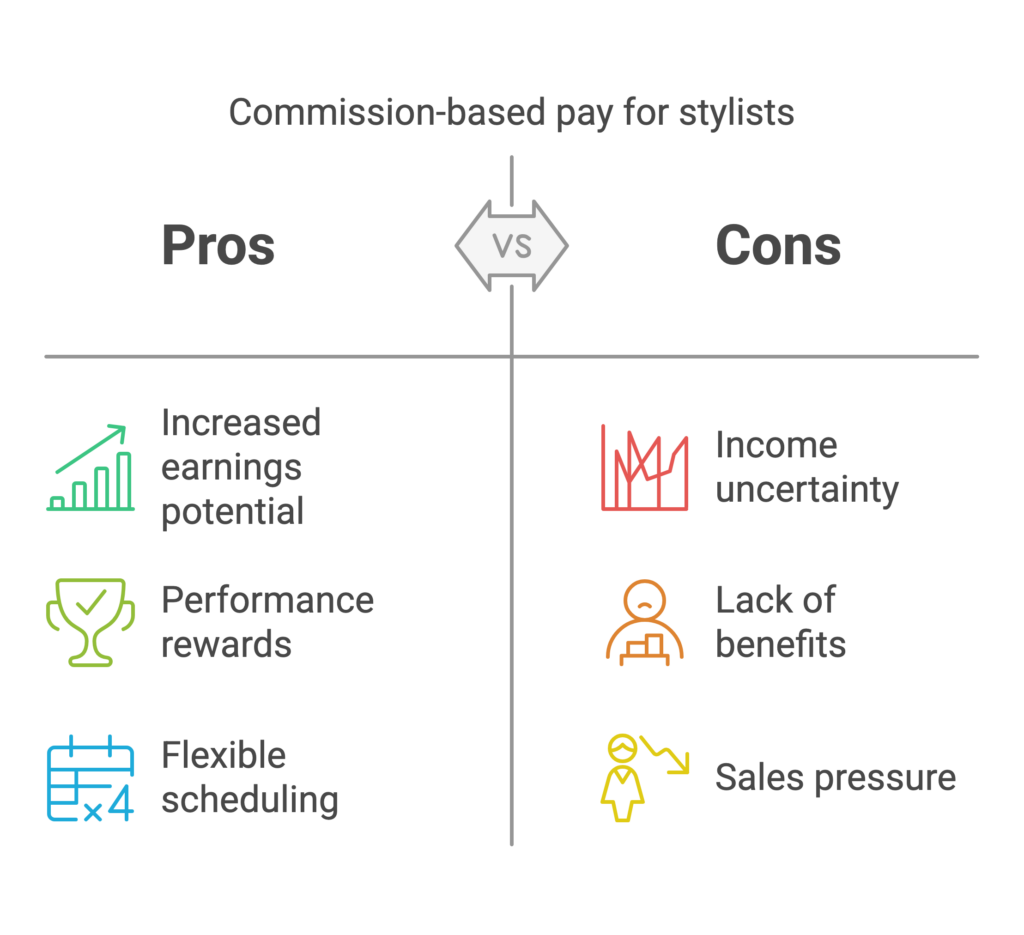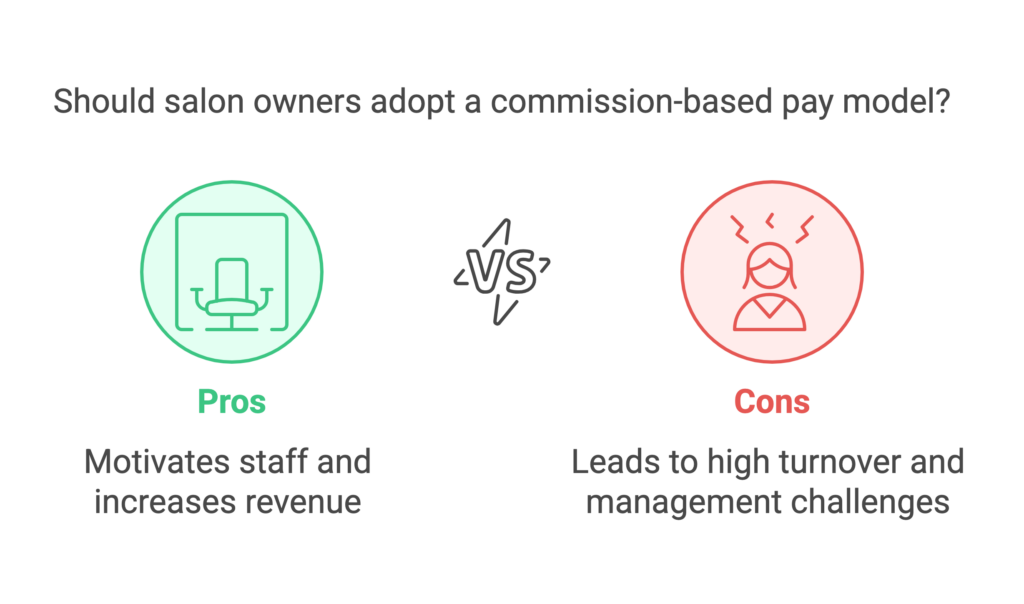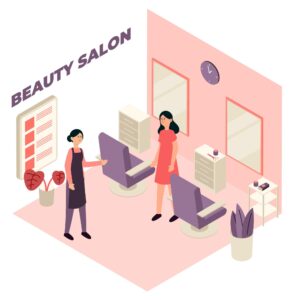A commission-based pay can be a strategic way to motivate your staff and optimize operational efficiency. This model ties a stylist’s earnings directly to the services they perform and the products they sell. Commission-based pay may encourage stylists to enhance their services, but also align their goals with the financial health of the salon.
But how does a commission-based pay actually work, and are there pros and cons for you and your salon? Whether you’re a seasoned salon owner, or just starting out, understanding commission-based work can help you navigate your business strategy with greater insights and confidence!
What is Commission-Based Pay?
Commission-based pay is a payment structure where employees earn a percentage of the revenue they make from the services they provide or products they sell.
For example, if your stylist’s commission is 40%, and the service they provide is $70, they would earn $28 from that service, and the rest $42 goes to the salon.
So, unlike hourly payment or standard salary, where stylists earn a fixed rate regardless of performance, commission-based pay directly links their earnings to individual output and success in engaging clients.
Commission-based pay encourages a more entrepreneurial approach among staff since their earnings can increase with higher sales or more client bookings. This dynamic can motivate your stylists, but it can also lead to fluctuating incomes, since sometimes client demand, seasonal demand, and how well they perform can change.
How Commission-Based Pay Works in Salon?
The typical commission rates in salons can vary but generally fall between 30% and 60%. This range can depend on several factors, including the stylist’s level of experience, the type of service provided, and the salon’s pricing and client base.
For example, a beginner stylist might start at a lower end of the commission scale as they need to build their clientele and skill set. As they gain experience, and show they can attract and retain clients, their commission percentage could increase.
Also, more complex services that require high skill levels or specialty treatments, such as balayage or keratin treatments, often earn a higher commission rate due to the additional training and experience required.
Thank you for subscribing. Check your mail for details
Some salons may also offer commissions on product sales. This can be beneficial for stylists and their earnings since they are more likely to recommend products that complement the salon service. For example, a stylist who performs a color treatment can earn additional commission by selling the client a color-safe shampoo and conditioner to maintain the look at home. Commissions on products are usually lower than service commissions and can range from 10% to 20% of the product sales price.
This structure encourages clients to promote products that enhance client satisfaction and improve the longevity of their work, altogether boosting your salon revenue. It’s a win-win situation where stylists can increase their income, and clients receive a more tailored and satisfying salon experience.
Don't forget to read tips and tricks on how to run a commission-based salon!
Pros and Cons of Commission-Based Pay
This model can offer both advantages and disadvantages for stylists. While it can lead to increased earnings, it can also sometimes be unpredictable and may lead to potential stress related to sales and client bookings.
Pros of commission-based pay for stylists
- Encouraged to increase earnings: This payment model offers stylists an opportunity to increase their earnings by securing more client appointments and boosting product sales. The more they sell or the more services they perform, the higher their take-home pay.
- Potential for higher earnings: Compared to the flat rate, commission-based pay can lead to significantly higher earnings, especially for stylists who are skilled in both their job and client relations. This model rewards performance directly.
- Flexibility in scheduling: Often, stylists on commission have more control over their schedules. This allows them to work peak times to maximize their earnings or balance work with personal life more effectively.
Cons of commission-based pay for stylists
- Uncertainty of income: Stylists’ income can fluctuate, since earnings are directly tied to the number of clients and product sales. During slower periods or unexpected downtimes, stylists may face financial instability.
- Lack of benefits: Commission-based positions often don’t include benefits like health insurance, retirement plans, or paid sick leave. This can be a big drawback for people who rely on these benefits for security.
- Pressure to sell: Stylists may feel pressured to upsell services or sell products, which might not always align with the client’s best interest. This pressure can lead to stress and might damage the client-stylist relationship.
Pros of commission-based pay for salon owners
- Reduced financial risks: You can better manage financial risks if you pay stylists based on the revenue they generate. This model ensures that payroll costs directly correlate with the salon’s income, reducing the burden on you during slower periods.
- Increased revenue: By encouraging stylists to maximize their bookings and sales, you will have an increased overall revenue for the salon. As stylists push to enhance their earnings through more services and sales, the salon benefits from increased client traffic, higher service frequency, and greater product turnover.
- Motivated staff: Commission-based model motivates staff to work harder, improve their skills, and build their client base. All of this leads to a more dynamic and competitive business environment.
Cons of commission-based pay for salon owners
- High staff turnover: Fluctuating income and absence of benefits such as health insurance or paid leave can lead to high turnover rates. Some stylists might seek a more stable working environment if they feel unable to consistently meet their financial needs.
- Management complexity: Tracking commissions, especially when different services have different rates or when product sales are included, can complicate payroll management. This system requires robust tracking and accounting systems to ensure accurate and fair payment.
- Potential for conflict: If not managed carefully, the push for higher sales can lead to conflicts among staff or between staff and management over client bookings and the use of salon resources. In this environment, your staff might become competitive, instead of collaborative, which can impact the overall client experience.
How to manage your commission-based pay, your staff, and your bookings with ease?

For a conflict-free and productive work environment, you should opt for a good booking system that will help you easily manage all staff and their commissions.
The perfect salon booking software you’re looking for is Trafft!
How can Trafft help you with this?
- Effortless commission calculations: Automatically calculate employee commissions without manual effort - saving you time and reducing errors.
- Fixed or variable commissions - your choice: Set either a fixed amount per appointment or a percentage based on the appointment value. Tailor commissions to suit your business needs.
- Custom commission for specific employees: Customize commission rates for individual employees. Whether it’s a unique deal or incentive, you have full control.
- Tax & coupon deduction from calculation: You can choose whether the employee commission is calculated based on the price including or excluding taxes, as well as with or without the coupon amount.
Not only will your clients easily book their appointments at their own convenience, any time of the day they want, pay online, and have automated notifications reminding them of upcoming appointments, but you will also be able to simply manage all your staff members, set up resources, monitor your KPIs, and have full control of your booking calendar!
Trafft will help you with both staff management, and make booking appointments really simple for your clients.
Don’t believe us?
Sign up for FREE or give Trafft a test run and revolutionize how you manage your salon!
How Do You Manage a Commission-Based Structure?
Setting fair commission rates
Establishing fair commission rates is crucial for maintaining motivation among staff, and ensuring their equality.
Research industry standards and consider factors such as the cost of living in your areas, the level of expertise required for different services, and the overall profitability of your salon. Another effective strategy is to have a tiered commission structure that increases with the stylist’s performance.
Clear communication and contracts
In a commission-based pay structure, transparency is key. Clearly communicate how commissions are calculated, when they are paid, and under what conditions adjustments can be made.
Use written contracts to formalize these details to prevent misunderstandings, and ensure that both parties are aware of their obligations and entitlements.
Balancing commission with other incentives
Commission can be a powerful motivator, but combine it with other incentives to increase your staff’s job satisfaction and to retain them. Periodic bonuses for reaching sales targets, health benefits, and supporting education and professional development can help you retain staff, and provide them a supportive work environment. Plus, this way you can encourage long-term commitment from your staff, and together build a really successful business!
So, Is a Commission-Based Pay for Your Salon?
This payment model can be dynamic and attractive for both stylists and salon owners.
It encourages staff members to deliver high performance and can align their interests with the financial goals of a salon, fostering a proactive, entrepreneurial environment.
It’s very important to implement this structure correctly. This includes setting fair commission rates, transparent communication, and balancing commission with other incentives to maintain a motivated and stable workforce.
With a good tactic, you can maximize the benefits of commission-based pay by dodging its drawbacks, ultimately creating a profitable and harmonious business environment.









